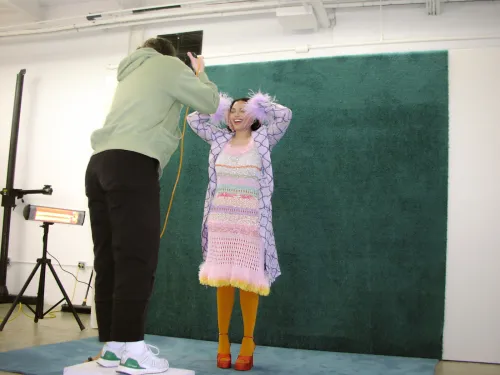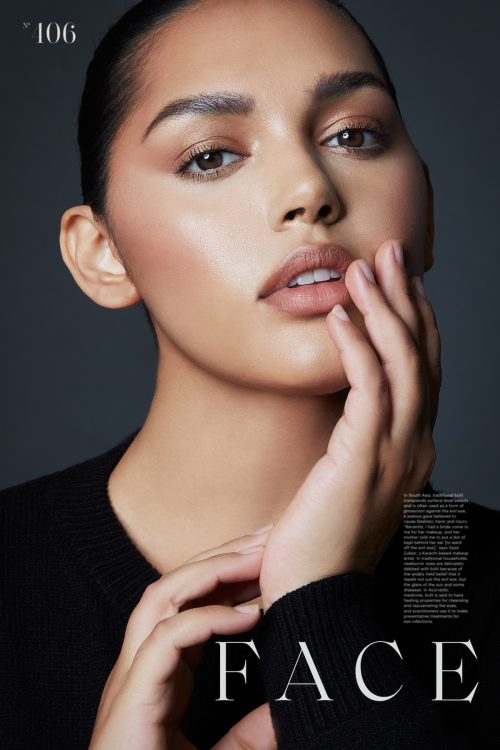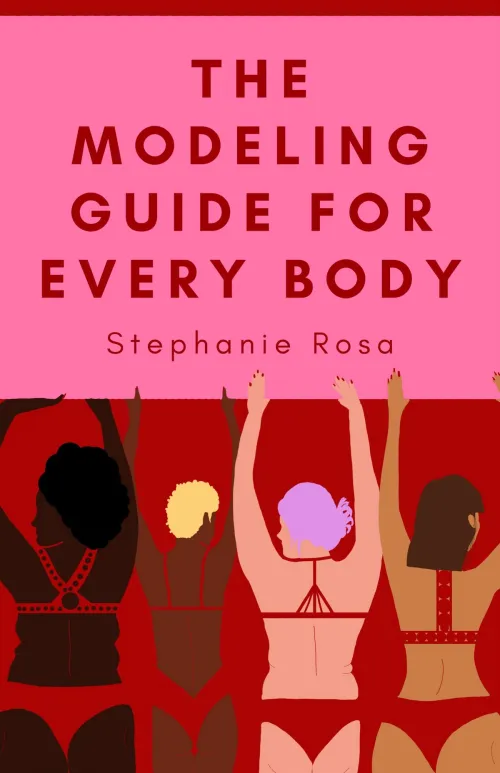I Went From Homeless to Earning 6 Figures as a Curvy Model

When people think of the glamorous life of a supermodel, they typically think of extravagant trips to exotic locations, fancy cars, and adoring fans. But for 29-year-old Stephanie Rosa, while she’s living that life now, it wasn’t always that way. In fact, at one point, she didn’t even have a home.
Rosa grew up in subsidized housing in the gritty streets of the Bronx to a Hispanic family, which included a mom who suffered from mental illness and a dad who worked as a janitor to make ends meet. Rosa and her four siblings struggled with a chaotic and volatile home environment, but she always had a place to lay her head at night.
“I don’t fault my parents. They didn’t know how to be financially stable. They did the best they could,” says Rosa.
But how did she eventually end up homeless? And from there, turn her life around to become a plus-size model earning six figures? Keep reading to find out.
Rosa experienced modeling early on but hit a roadblock.

Rosa’s mom had enrolled her in a modeling agency at the age of three, and she tells Best Life that she was always most at home when she was in front of a lens. She idolized the likes of Tyra Banks.
That was until she graduated high school and ended up at a community college in the New York City borough of the Bronx. Rosa decided to pursue psychology, partly because her mother’s struggles inspired her to help others who dealt with mental health issues.
Rosa was no stranger to those feelings of depression and despair, and she even took out her frustrations on her own body, cutting herself as a teenager. She also suffered from an eating disorder but dealt with it alone with no access to adequate healthcare or insurance.
“Because of what I went through, I had this drive to help others. I always wanted to help people,” she explains.
While Rosa was pursuing her psychology degree, her parents decided to move to New Jersey. She moved in with her high-school boyfriend, Remi, and soon learned she was pregnant. That’s when her life drastically changed. At age 21, she gave birth to a daughter named Penelope.
Remi supported Stephanie but didn’t have the financial means to provide for her and their daughter. Jobless and without purpose in life, Rosa’s worst nightmare came to fruition—suddenly, she found herself homeless and on the streets of New York City.
Homelessness took its toll.

Now, saddled with an infant, Rosa attempted to get into the local woman’s shelter in the nearby borough of Queens and was turned away multiple times.
“I would change my baby’s diaper wherever I could, including on the subway,” she says. “I remember she had a dirty diaper and rash once, and I panicked because the train was too crowded, and I couldn’t change her. This is not the way I wanted her to live.”
By this time, the new mom had also dropped out of school. She bounced around to local hotels provided by social services while waiting for a room to open at the shelter. “I was pushing my daughter around New York in a stroller, passing by homeless people on every street corner thinking that’s going to be me,” she laments.
Rosa finally received word two months later that she’d be admitted to the shelter. There, they provided a place to live but nothing else. Due to the help of a social worker, she moved into the Lincoln Hotel with her daughter, where she stayed for the next eight months. She says she was grateful and ecstatic for this room that was “the size of a closet.” It was home—for now.
It also provided full-time daycare for Penelope and allowed Rosa to get a job as a caterer. “I remember the social worker said no one can save you; this is where people either sink or swim. I knew I had to provide for my daughter. I had to swim.”
Unfortunately, the statistics for someone like Rosa are grim. A 2020 report by the Citizens’ Committee for Children of New York found that, among the heads of families with shelter in DHC shelters, 95% are Black or Hispanic, and 69% are single mothers. But the young mom was determined not to become a statistic.
For more inspiring stories delivered straight to your inbox, sign up for our daily newsletter.
But Rosa kept pushing.
Through the shelter’s help, Rosa could go back to school and attend a program where she could pursue education in counseling, as she’d hoped to do. But, through an internship where she counseled and helped people suffering from substance abuse, she soon realized this “dream job” of hers wouldn’t provide the paycheck she needed to support her daughter, so she left.
She switched gears and took classes in art and photography while dreaming about a job that would afford her the life she’d always hoped for for her family. “People would always say you are so beautiful, you really should be a model, and I thought, OK, catering just isn’t going to cut it. This isn’t what I want to do with my life.”
So, about five years ago, she took a chance and signed up for a modeling agency in New York City that accepted “mid-size girls.” At a size 12/14, Rosa wasn’t the typical model stature but knew there was a market for curvy girls. Within weeks, she was booking jobs. “I got booked for the lingerie brand AdoreMe, and one of their regular girls stopped showing up. So they gave me her job.”
At that point, Rosa was off and running. Knowing she beat the odds, not only personally but also professionally, she stayed laser-focused on one thing—providing for her little girl.
And it paid off in more ways than one.

In 2020, Rosa and Remi married, and they are raising Penelope, whom they call Penny, now eight, in New York City. Rosa even got Penny involved in her lucrative career; the mother-daughter duo modeled in the Macy’s Mother’s Day campaign earlier this year.
“I cherish the opportunity to be present for my child and give her the love and support she deserves. It brings me immense happiness to see her needs fulfilled and witness her grow and flourish,” says the model.
Now, Rosa lives the life many only dream of, making six figures doing what she loves and boasting clients like Vogue, Sports Illustrated, and Abercrombie. While she continues to inspire others, especially on Instagram, where she has nearly 100,00 followers, she’s also written two books, The Fashion Model’s Playbook and The Modeling Guide for Every Body so other girls who don’t fit the typical model mold can feel like they can do it too. She also launched a bikini line for curvy girls that celebrates diversity called CHROMAJOY.
Rosa maintains a good relationship with her parents, who have since moved out of the tri-state area. She even helps support them with the income she earns from her successful career.
As it turns out, she achieved that dream of helping others while still paying the bills—and then some. “Whatever happens, you just have to keep going. There were times I felt like ‘I should just kill myself. I could just kill myself!’ but then I’d remember my daughter, and I just never gave up.”